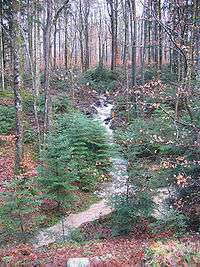Darney
| Darney | ||
|---|---|---|
| Commune | ||
| ||
 Darney Location within Grand Est region  Darney | ||
| Coordinates: 48°05′09″N 6°02′48″E / 48.0858°N 6.0467°ECoordinates: 48°05′09″N 6°02′48″E / 48.0858°N 6.0467°E | ||
| Country | France | |
| Region | Grand Est | |
| Department | Vosges | |
| Arrondissement | Neufchâteau | |
| Canton | Darney | |
| Intercommunality | CC Vosges côté Sud-Ouest | |
| Government | ||
| • Mayor (2008–2014) | Hervé Buffe | |
| Area1 | 7.92 km2 (3.06 sq mi) | |
| Population (2006)2 | 1,325 | |
| • Density | 170/km2 (430/sq mi) | |
| Time zone | UTC+1 (CET) | |
| • Summer (DST) | UTC+2 (CEST) | |
| INSEE/Postal code | 88124 /88260 | |
|
1 French Land Register data, which excludes lakes, ponds, glaciers > 1 km2 (0.386 sq mi or 247 acres) and river estuaries. 2 Population without double counting: residents of multiple communes (e.g., students and military personnel) only counted once. | ||
Darney is a commune in the Vosges department in Grand Est in northeastern France.
It is located in the Vôge Plateau, around the location of the source of the river Saône. Darney is known for its forest of oak and beech trees.

History
Darney is built on a promontory dominating the valley of the Saône. The Romans built a castle here to control the area, and watch the forested countryside. As a fortified town in the Middle Ages, Darney had towers and two fortified gates, and was known as the "city of thirty towers". Theobald II, Duke of Lorraine gave the town its church in 1308. The town suffered during the Thirty years war, being razed by the Swedes led by Bernard of Saxe-Weimar, who were allies of the French, in 1634. The castle of the time was destroyed in 1639. Remnants of this castle still exist, as well as the current, smaller castle, which was built in 1725.[1]
During the First World War, Darney was the rallying point for Czech and Slovak volunteers, where they were stationed at Camp Kleber.[2] Due to their presence, on 30 June 1918, Czechoslovakian independence was proclaimed in the village. The French President, Raymond Poincaré inspected 6,000 Czech and Slovak legionnaires,[3] before handing over the Czechoslovakian army flag to Edvard Beneš, Minister of the Interior and of Foreign Affairs within the Provisional Czechoslovak government.[4] This flag became the flag of the 21st rifle regiment.[5]
The former town hall is now a Franco-Czechoslovakian museum, dedicated to Camp Kleber, the Czechoslovakian troops stationed there, and the birth of the Czechoslovakian state.[6]
Twin towns
Darney is twinned with the town of Slavkov u Brna, also known as Austerlitz, in Moravia.
Points of interest
Exceptional Darney forest and wilderness assets of Ourche Valley: Oak trees, roe deers, red deers, wild cats. The Ourche river. Scenic views at La Hutte with peaceful pond and lakes, the old chapel and of course the giant trees of the Arboretum.Scenic views at Abbaye de Droiteval.
Natives of Darney
See also
External links

References
- ↑ "Châteaux and fortresses in Vosges". General Council of Vosges. July 7, 2009. Retrieved July 7, 2009.
- ↑ "Events in June: Commemoration of the birth of Czechoslovakia and Homage to 6000 troops at Camp Kleber" (in French). General Council of Vosges. Retrieved July 7, 2009.
- ↑ "Czech Republic: Political Relations". French Ministry of Foreign Affairs. November 25, 2008. Archived from the original on April 6, 2012. Retrieved July 7, 2009.
- ↑ "Commemorating the legacy of Darney" (PDF). Czech army. Retrieved July 7, 2009.
- ↑ "Speech of the Prime Minister Mirek Topolánek in Darney in France". Czech government. June 29, 2008. Retrieved March 4, 2011.
- ↑ "Darney-Austerlitz twinning committee website" (in French). Archived from the original on July 20, 2011. Retrieved July 7, 2009.
| Wikimedia Commons has media related to Darney. |
